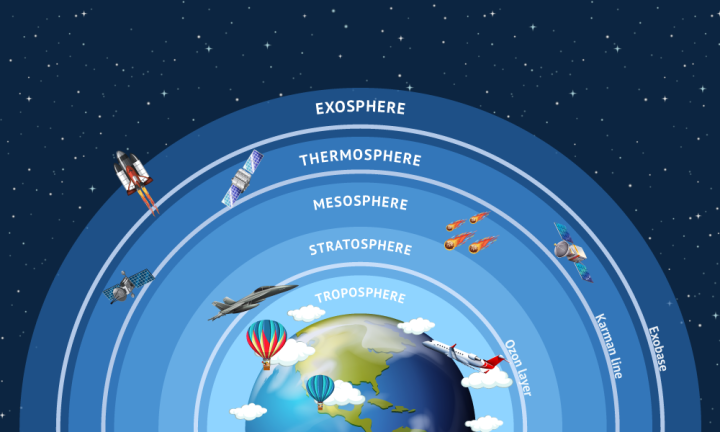
Atmosphere
The gaseous envelope of planet Earth’s atmosphere extends from sea level to space. Its upper limit is considered to be around 100 to 120 km above the surface. It contains 78 percent nitrogen, 21 percent oxygen, and less than 1 percent argon; the rest is composed of carbon dioxide, water vapour, and other compounds. The atmosphere also consists of aerosols of tiny dust and liquid droplets.
The atmosphere is vital for life on Earth as it protects us from cosmic radiation, keeps the planet reasonably warm thanks to the greenhouse effect, and last but not least, most living organisms breathe it. Thanks to the uneven heating of the Earth’s surface by the Sun, the atmosphere is constantly in motion. The movement of air masses is called wind. The composition of the atmosphere is constantly changing slightly due to non-biological as well as biological processes on the planet and in its space environment. It is influenced, for example, by volcanic eruptions, cosmic winds, human activity, or plant photosynthesis. For instance, human use of fossil fuels leads to an increase in CO2 concentration.




